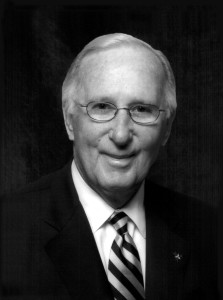-Dick Hefton
 I’ll bet you think this is a lesson on current conditions in the war zones in the Middle East. And it’s a pretty safe bet many probably never heard of Afghanistan before 9/11, or maybe in the ‘70s when the Soviet Union invaded – and to the Free World’s delight – got mired in combat quagmire?
I’ll bet you think this is a lesson on current conditions in the war zones in the Middle East. And it’s a pretty safe bet many probably never heard of Afghanistan before 9/11, or maybe in the ‘70s when the Soviet Union invaded – and to the Free World’s delight – got mired in combat quagmire?
Afghanistan plays high on our minds these days so I use it here to punctuate a narrative on a too-often overlooked Oklahoman.
Patrick Jay Hurley, son of a Coal County Indian Territory miner; graduate of Bacone Indian College; Secretary of War: U.S Army major general; First U. S. Minister to New Zealand; personal envoy for President Franklin D. Roosevelt for China, Soviet Union, Afghanistan and other nations; WWII Ambassador to China and the list goes on!
The Hurley name has earned star status in Oklahoma in recent years but certainly not for the storybook accomplishments of the statesman-soldier-diplomat Patrick but instead for the works of his son, Wilson, whose murals serve as the focal point of the Great Room of the National Cowboy and Western Heritage Museum (Which is good sidebar for later.)
Youth of his time were advised to “Go West Young Man” but Hurley broke away from the mining trap which captured most boys there in the late 1800s and pursued every opportunity to “GO East”! After a time punching cows working for his degree at Bacone Hurley worked in the Office of Indian Affairs and finished law school in Washington. When WWI pulled the U.S. into the war he was already a captain in the Oklahoma National Guard and after meritorious combat the now-Lt. Colonel returned to his Tulsa law practice. He was instrumental in the resolution of the 1921 Tulsa Race Riot, which would later prove valuable when as a Reserve Colonel and former Secretary of the Army he was assigned the task of ending the war veterans 1932 Bonus March to Washington overseeing the turbulent and unpredictable behavior of Gen. Douglas MacArthur, with whom he would have considerable contact during the looming second world war. Hurley’s unusual talent for finding himself under the spotlight in highly contagious and perilous events and his well-grounded southwestern nature to never equivocate made him the right man to deal with the world’s most powerful leaders.
Pres. Franklin Roosevelt made him his personal representative throughout WWII. FDR had an abiding distrust of state department diplomats. Rather than deal with mistrust he relied throughout the war on then-Major General Patrick J. Hurley as his emissary to deal directly with world leaders of the time, such as Churchill, Stalin, Chang Kai Shek, Mao Zedong and Zhou Enlai.
On one particularly sensitive mission Roosevelt sent Hurley on a covert mission to Kabul, Capitol of Afghanistan. Hurley hoped secure good will and post war relations ahead of the Brits and Russians in the “Belt Buckle” of the near East. Hurley had convinced FDR that the Brits and Russians were abusing management of U.S. lend Lease materials so to gain hegemony centered in Iran where both conspirators could control oil, territory and deep water ports. Additionally, the Brits were actively sluffing off more bombing missions in European on our Army Air Force while, as some observers report, the British were flying “milk runs” in the Near East to dominate commercial air routes once hostilities ended. It is pretty plain both Allies were anxious to head off preemptive action by Hurley that might mar their plot. Accordingly, a flight into Kabul by FDR’s negotiator should be stopped by any means. Some historical reports say inclement weather turned Hurley’s plane back prior to entering Khyber Pass which guarded his destination. Hurley’s entourage diverted to Kabul over land. Bad weather may indeed have been the reason for turning back. Or was there an attempted interdiction? We know that before departing Karachi the Brits tried to block them from obtaining AV fuel. And, Wilson Hurley has stated “Later, before returning to Washington at the close of the Mission he (his father) was awarded the Distinguished Flying Cross (DFC) for hazardous aerial missions he had undertaken.” DFCs are not usually awarded just for “weather avoidance.”
Patrick Hurley, Oklahoman, identified the critical importance nearly 70 years ago and constructed a mechanism which, if left alone, a better world would exist today. Afghanistan – that inscrutable pivotal and illusive land welcomed Hurley and the prospect he brought to tie with neighbor Iran and eventually all the other surrounding states. All his good work is gone now and lost in a labyrinth the depth of which is unfathomable.
As for the man – Patrick Jay Hurley – If his story was fiction Hollywood could set a box office record! The few biographies to be found fail to capture the imagination and the real life drama highlighted in his world-changing adventures. Coalgate lays claim as his hometown and some attention in years past have saluted him, even though the nearby Lehigh may be his actual birthplace but if you drive through on the state highway, don’t look for a sign – “Lehigh, “Home of Patrick Jay Hurley.”

Dick –
What an interesting article. Do have any sources we could use to follow up on this interesting Oklahoman?
Thanks for this. It was the best of my morning reading.
– Larry Stone
An interesting side of history that we don’t often hear. Of course, our missteps in Iran during the 1950’s directly lead us into the mess that we are in now, but that’s another story.